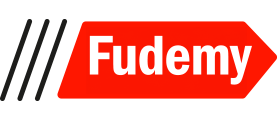What
You’ll Learn
You’ll Learn
- Capture and record high-quality screen videos with OBS Studio
- with details about custom configurations
- Edit video audio with Audacity
- eliminating ambient noise and normalizing the audio volume
- Edit video and audio with Kdenlive
- with details about custom configurations: learn how to apply effects
- transitions and basic edition techniques
- Render your projects into constant high-quality
- balanced bitrate
- low-sized video outputs
- with the highest possible processing performance
- Produce high-quality videos for your lectures or whatever other applicability you might have for your captured videos
- Learn how to capture a 1k video from your screen and upscale that to a 4k final rendered video
- ready for upload
- Learn the basics about video and audio containers and codecs (encoders and decoders)
- Know the considerable differences between software-based and hardware(gpu)-based encoders
- Learn how to evaluate the quality of an encoded video and how to decide which codecs
- parameters and values to use with ffmpeg (both in OBS Studio as in Kdenlive)
- Leverage the most from the your NVIDIA Graphics Card and from the new generation MP4 NVENC and Webm VP9 encoders
- Reduce your rendering time to a proportion of 1:1 compared to your editing video length. Render a 1-hour 4k 60fps video in only 1h-rendering time… instead of in up to 10 hours. Diminish in 90% your rendering waiting with custom encoding ffmpeg profiles !
- Use much less storage space with the new MP4 NVENC HEVC H.265 and Webm VP9 encoders
- keeping the same quality (compared to traditional encoders)
- Know the limitations of the encoding process and how to mitigate them regarding your final rendered video properties
- All that using only open source free Operating System and Softwares: Linux
- OBS Studio
- Audacity and Kdenlive
- Video Codecs used: MP4 NVENC HEVC H.265 and AVC H.264
- MKV NVENC AVC H.264
- Webm VP9 … with brief comments on: FLV
- WMV
- Gif and HuffYUV
- Audio Codecs used: MP4 AAC and Webm Opus
Requirements
- If the student wants to repeat the practices on his own
- he should have a notebook or desktop pc with NVIDIA Graphics Card and Linux installed
- although all used softwares are cross-platform and are available also for Windows and iOS. Though Linux is most recomended.
Description
Capture, Edit, Render: Create UHD Screen Videos with NVIDIA:
Leverage the most from your Graphics Card and create HQ short-size videos with NVIDIA and Google ultimate encoders
– Learn how to get the most out of your NVIDIA Graphics Card
– Learn how to use NVIDIA NVENC H.264 / H.265 and Google Webm VP8 / VP9 enconders efficiently
– Get known to the best and most complete Capture, Editing and Rendering Open Source Softwares: OBS Studio, Audacity and Kdenlive, and learn how to use them with FFmpeg and Linux
– Learn how to customly configure your projects and create personalized high-quality efficient FFmpeg profiles
– Reduce in 90% your rendering times: render 1h-hour 4k 60fps videos in only 1 hour (instead of usual 7-10 hours)
– Prepare yourself for becoming a high-skilled well-paid home-office video editor professional with this introductory course
* this course is NOT about advanced video edition techniques – other than the ones related to the render process itself or some basic edition samples. This course does not substitute Video Edition courses that would tackle video edition strategies in full, including when using Kdenlive or any other video editor software. This course focus is the codecs and configurations related to recording, editing and specially rendering your recorded videos using NVIDIA graphics card the most efficient way. Advanced video edition goes way beyond the scope of this course.
** please set the displaying resolution of the lecture videos to 1k at the bottom right configuration button. Udemy generally sets a lower resolution. Although all videos have been rendered and uploaded in 4k, the max resolution at Udemy is 1k (or lower, if you do not set it manually).
Who this course is for:
- “Anyone interested in creating and managing his own screen capture videos
- or even other sources videos
- with the best quality and performance
- taking the most out of his machine processing capability and optimizing his storage capacity with better compression ratio codecs”






